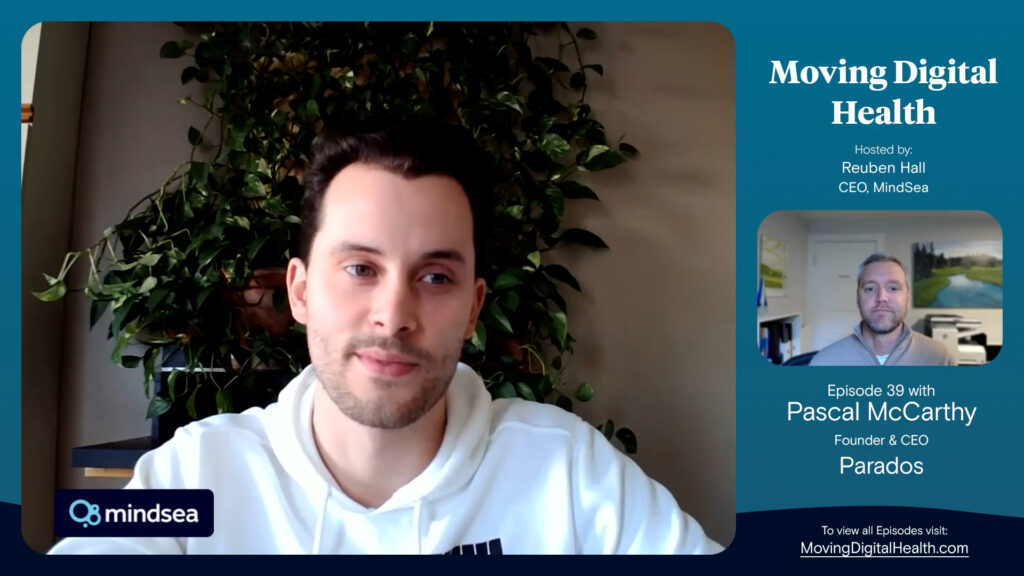If you’ve spent any time in the digital health space, we’re sure you’ve heard the term “service blueprint” come up a few times—and that’s a good thing! Service blueprints can be an enormously helpful strategic tool for clarifying the process and timing of a project’s developmental stages across all stakeholders. Plus, by creating a diagram that visualizes every team member’s role throughout the process, it’s very likely you’ll turn up new opportunities in the way your company operates.
As health tech continues to boom, however, not all product startups and developers implement such an approach, and those that do often find they need to continually tinker with how, where, and when a blueprint should be used. In this post, we’ll break down how to best use blueprints in a digital health product development setting.
The Importance of Strategic Thinking
Far too often, organizations either fail to align on a unified approach before launching a project, or they rush through the process, failing to identify gaps or inaccurate assumptions that won’t come to light until further down the road—when implementing change is far more difficult and expensive.
When alignment is achieved through a strategic blueprint, on the other hand, it provides a foundation for all stakeholders. With goals and checkpoints clearly mapped out, as well as each stakeholders’ role in the process, the project can begin with everyone on the same page.
It also makes it that much easier to estimate budgets and timelines, allowing your team more time to take on other critical tasks, like creating the Rockstar investor pitches and promotional launch material you’re known for.
What Matters Most in Health App Development – The End User
At MindSea, we have what we call a “healthy obsession” with human-centered design. We discover why the end user needs the app, which features they’ll find useful when they do use it, and which features they might find overwhelming.
To find answers to these questions and discover potential blind spots, we create a journey map that illustrates how users navigate the app and access its features. We also conduct user testing, which is also a critical part of the blueprint process. It’s easy to make assumptions about what the user needs—trouble is, those assumptions are often incorrect.
For that reason, we have a 5-step user testing process that provides the qualitative data needed to assess whether the product in development truly delivers the value we think it does. Once we understand what the user needs, it becomes crystal clear what product features to include—and which to leave on the cutting room floor.

What Happens Next?
We know what you’re thinking, what if things don’t go according to plan?
That’s a great question. It’s also one we feel should be reframed. Instead of asking what if things don’t go according to plan, it’s better to ask how to manage a process that will almost certainly not go according to plan.
Our approach, as is the case with nearly all software products, is the use of agile sprints.
“At the beginning of each sprint the team commits to the amount of work they are going to try to complete and work towards that goal. Once features are developed they go through internal review cycles like code review, design review and QA. Beta builds are used to demo and test completed work.” — Thomas Eaton, Director of Development at MindSea
The implementation of Agile development most commonly happens through Scrum. If you’re curious to read more about Agile development and Scrum, Trello has an excellent guide, which you can read here. The MindSea team frequently utilizes Trello or Jira as a sprint board for tracking progress.
Although this process can seem costly and time-consuming to tackle upfront, doing so is essential, as it minimizes frustration, wasted effort, and greater costs down the road. It also allows for proper staffing and project management, empowering all stakeholders to collaborate within a clear and productive framework.
How Health Tech is Implementing Strategic Blueprints
Over the last two years, HealthTech has hit a point where it is now an essential component for any health care program looking to remain competitive and deliver the best possible care. While this introduces many opportunities for Health Tech companies, managing early traction and converting that into a scalable product is a challenging process requiring meticulous planning, strategy, and risk-mitigation.
According to Balin Bene, CEO of Bene : Studio—a company with 10+ years of digital product development experience—the foundation for successfully growing any Health Tech startup begins by first implementing a product design strategy and roadmap. This allows a company to ensure key milestones are clear and illuminates what strategy and management processes are needed to achieve those milestones.
From there, the company begins with a successful MVP (minimum viable product), and then builds in a step-wise function. It sounds straightforward but producing an MVP that hits a core necessity for your customer base is extremely difficult without fully understanding their needs.
“You have to have the first success with customers with your MVP to build later steps on top of the product. Represent the core value with a small MVP, then you can go step-by-step, adding more value and leaving out initial fantasies about the product, and implement the nice-to-haves later.” – Balin Bene, CEO, Bene : Studio
How MindSea Uses our App Blueprint to Guide us and Our Clients
As Benjamin Franklin once said, “By failing to prepare, you are preparing to fail.”
We couldn’t agree more. That’s the reason why, before beginning any project, we make sure to understand what, why, and how our clients need to deliver the most impactful product for their users. Each blueprint is created collaboratively with our clients and through intensive market research and user testing.
With over 100 blueprints developed, our process helps define success and is fully adaptable to best fit your needs. Contact us to start your Blueprint today!



